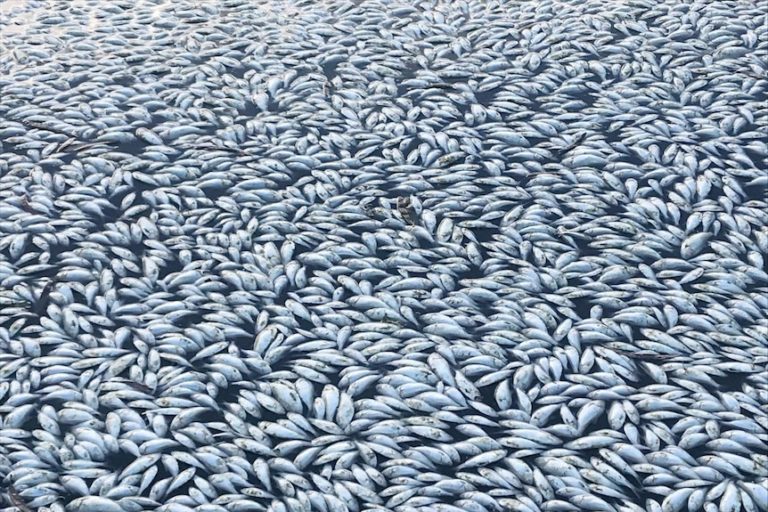
What’s missing from COP 26 climate negotiations? Adaptation
While COP26 is focusing on emissions reduction, many countries are overlooking more immediate opportunities to respond to impacts already locked-in to the climate.system.
The Wilcannia community living on Barkindji country in remote north west New South Wales are no stranger to crises. In August 2021, this small remote community made international headlines when COVID-19 infected its majority First Nations population at a rate not seen in Australia during the pandemic. By local accounts, help arrived late, despite early warnings and concerns sent to governments and officials that existing conditions, especially overcrowded housing, would compound any outbreak. By October 2021, Wilcannia was declared COVID free and one crisis was contained.
Far less progress has been made on another crisis, the climate crisis, where again, Wilcannia locals have voiced concerns early to governments and industry. As in the COVID crisis, Wilcannia is at the behest of decision-makers far distant from their everyday experience – of watching rivers run dry, football fields turn to dust and family leave because work and opportunity dries up, literally and figuratively, like local water supplies.
A recent flood has bought welcome relief, reassuring an entire generation that their cultural heritage and practice, of hunting and fishing, seasons, ceremony and country, persists beneath the cracked earth of dry river bed. True, tens of thousands of years of cultural heritage have persisted through much more. This acknowledged and respected, until recently many children had lived their entire lives without seeing water in their mighty Baaka/Darling River.
Community radio station, 103.1FM Wilcannia River Radio has been critical to amplifying local concerns about climate changes and impacts and fostering discussion. Other media only arrive when there’s a disaster but their local radio is a source of ongoing connection to information, ideas and conversation. Wilcannia River Radio Station Manager and Ku-Ku Yalangii/Woopaburra man, Brendon Adams explains:

It is generally accepted in climate communication that the most meaningful and impactful messages draw upon local stories. Climate responses are often distant global discussions that don’t translate to the everyday lived experience of local communities. Accepted more broadly is that climate change is not a science problem but a social problem. The embeddedness of community radio in the social and cultural lives of their communities is thus a relatively untapped reservoir to communicate climate action and pursue climate justice.
In partnership with the Community Broadcasting Association of Australia, our project “Warming Up: Building the capacity of community broadcasting to communicate climate change” is leveraging the resources of this undervalued sector of Australian media to ready diverse Australian communities for arrived and forecast climate changes. Our project aims to build the confidence of stations to discuss climate changes and to develop training programs for the sector’s volunteers. We aim to co-design with selected stations exemplary content for sector wide broadcast and a podcast series. In our interaction with the sector, we will collect feedback from communities alongside ideas for local climate action. This deep engagement with communities and their local media is meaningful consultation for policy and decision makers.
Climate communication capabilities are enormous via this network of more than 450 stations delivering over 500 radio services (on AM, FM and DAB+) that crisscross the nation. From metropolitan, regional and remote geographic communities, to ethnic, faith-based, First Nations, youth and people with a disability communities, over 5 million Australian’s tune into community radio each week for on average 14 hours, representing 31 per cent of radio listeners in Australia.

Community radio in Australia, since its inception, has been premised on empowering marginalised communities. While not without its own weaknesses, community radio remains strongly, and often the best, positioned media to nurture locally relevant responses to climate change and other significant challenges. This role, already undertaken by some stations, is a peerless opportunity to bring local voices and experiences to the patchwork of climate change impacts so characteristic of a country as geographically and culturally diverse as Australia.
Community radio has always empowered local voices and with climate change, can again leverage its priority of local action and production in the service of a global community and environments. It is, in many ways, a useful synergy between the ambition and achievements of community radio stations and those of climate change action, where local stewardship and action is essential to meaningful efforts and success. Community Broadcasting Association of Australia CEO, Jon Bisset agrees:
The sector’s pursuit of communicative justice also parallels the pursuit of climate justice. Meaningful engagement with the benefits and burdens of climate changes – and its possibilities for action – is authentic and relevant from the bottom-up experience of local geographic communities and/or diverse communities of interest. For community radio, the collection and telling of these community stories are, and always have been, their raison d’être.
In Australia, the ‘climate wars’ have been a feature of mainstream news media with plenty of criticism about the role of Australia’s largest news media organisation, News Corp. Online media has somewhat complicated measurement of audience reach and news consumption though it is fair to say that News Corp, across platforms, dominates Australian news production, distribution and consumption. This dominance can lead to echo chambers that often fail to capture the voices and diversity of Australian communities. These criticisms are well rehearsed about the impact of the concentration of media ownership on Australian public debate and discussion.
News Corps’ recent (though ironically enough, yet to be believed) departure from decade long reporting of climate science denial could transform Australian public debate. In the meantime, stations like 103.1FM Wilcannia River Radio are an antidote to this deficiency, though their position in communities is much more than a mere subordinate to mainstream media. This is especially evident in their role, realised and potential – in the local communication of climate change impacts and opportunities. These stations remain long after the sensation of disaster, where they are also pivotal to responses. Beyond their role in emergency broadcasting, these stations are well poised to foster public participation in solutions for our climate altered future, one community at a time.
 Associate Professor Kerrie Foxwell-Norton lectures in journalism, media and communication studies. Her research interests oscillate around relationships between communication, communities, culture and country. She has consciously sought projects which involve a direct engagement with communities. As a result, she has worked extensively with Australia’s community media sector, various coastal communities and works for and with, Indigenous community throughout Australia. She is a member of the Griffith Centre for Social and Cultural Research and program leader in Griffith’s Climate Action Program.
Associate Professor Kerrie Foxwell-Norton lectures in journalism, media and communication studies. Her research interests oscillate around relationships between communication, communities, culture and country. She has consciously sought projects which involve a direct engagement with communities. As a result, she has worked extensively with Australia’s community media sector, various coastal communities and works for and with, Indigenous community throughout Australia. She is a member of the Griffith Centre for Social and Cultural Research and program leader in Griffith’s Climate Action Program.
 Dr Bridget Backhaus is a Lecturer with the School of Humanities, Languages and Social Science at Griffith University. She has worked in community radio as a journalist and producer. Her research focusses on the intersections of voice, listening and social change in community radio.
Dr Bridget Backhaus is a Lecturer with the School of Humanities, Languages and Social Science at Griffith University. She has worked in community radio as a journalist and producer. Her research focusses on the intersections of voice, listening and social change in community radio.
 Anne Leitch has a background in science, social science and communication. She has a strong interest in supporting communities to adapt to climate change, in particular to the impacts of sea level rise. She is also interested in narratives around climate change and how these support incremental and transformative societal change. Currently she has a role at NatureResearch as a casual senior editor for Partnership and Custom Media and also does interesting research projects at Griffith University School of Humanities, Languages and Social Science.
Anne Leitch has a background in science, social science and communication. She has a strong interest in supporting communities to adapt to climate change, in particular to the impacts of sea level rise. She is also interested in narratives around climate change and how these support incremental and transformative societal change. Currently she has a role at NatureResearch as a casual senior editor for Partnership and Custom Media and also does interesting research projects at Griffith University School of Humanities, Languages and Social Science.

While COP26 is focusing on emissions reduction, many countries are overlooking more immediate opportunities to respond to impacts already locked-in to the climate.system.

There’s no place like utopia. Coined by Sir Thomas More in the sixteenth century, the word ‘utopia’ is a play on the Greek for ‘no place’ and ‘good place’. But is an ideal society unattainable – or optimal?

Despite early forecasts of a COVID-19-driven slump, house prices are now surging in many parts of Australia. This is further widening the gap between the housing “haves” and “have-nots”, and we are seeing related rises in housing stress, rental insecurity and homelessness. In Australia and elsewhere a movement has emerged that supports tiny house living as an important response to the housing affordability crisis.